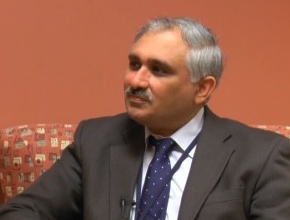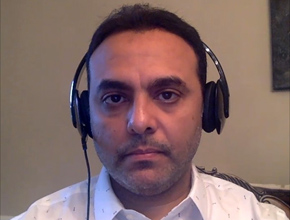References
Chu DK, Kim LH, Young PJ, et al. Mortality and morbidity in acutely ill adults treated with liberal versus conservative oxygen therapy (IOTA): a systematic review and meta-analysis. Lancet. 2018 Apr 28;391(10131):1693-1705. doi: 10.1016/S0140-6736(18)30479-3. Epub 2018 Apr 26. Review. PubMed PMID: 29726345.Roman Jaeschke, MD, MSc: Good morning, welcome to another edition of McMaster Perspective. Today we will talk to a lead author of a new The Lancet publication dealing with oxygen therapy, Doctor Derek Chu. Could you introduce yourself and tell us a few words about what you do?
Derek Chu, MD, PhD: Certainly. I am Derek Chu. I completed my internal medicine training at McMaster University and now I am a clinical fellow here and I am very excited to speak to you about our recent IOTA (Improving Oxygen Therapy in Acute Illness) systematic review.
Roman Jaeschke: We will come back to the name IOTA. But first, what triggered your interest in the area of oxygen treatment?
Derek Chu: The motivation behind this study came from a very simple clinical question that we all face as health-care providers—be it emergency personnel, nurses, respiratory therapists, or physicians—whenever we are treating an acutely ill patient: how much oxygen should we be giving this patient if they require it? Secondly, there has been a growing observational and biologic rationale behind potential harms of oxygen, but whether or not there truly was such a thing as too much oxygen has been unclear.
Roman Jaeschke: How did you approach it?
Derek Chu: To answer this we conducted a systematic review and meta-analysis of all available randomized trials for any patient with acute illness. Sepsis, myocardial infarction, stroke, or critical illness were the principal diagnoses that were captured in 25 randomized trials that we included.
Roman Jaeschke: How did the groups differ in terms of oxygen treatment?
Derek Chu: The median intervention for oxygen therapy in the liberal arm was approximately 60%. But the range was anywhere from 28% fraction of inspired oxygen (FiO2) all the way to 100% FiO2. In the conservative group, patients were either given room air alone or a lower amount of oxygen therapy, such as in the range of 30% to 50%.
Roman Jaeschke: Was the goal of this treatment in the conservative group to achieve some end result in terms of oxygen measurement?
Derek Chu: Typically not. Only 2 out of the 25 studies had specific targets to titrate to. In the conservative arm sometimes this would be 80% to 92%, in other contexts it would be 92% to 95%.
Roman Jaeschke: Thank you. The liberal group got quite a bit of oxygen. The conservative group got less oxygen. How could we describe how much oxygen got the conservative group?
Derek Chu: The conservative group were either given room air alone or prespecified to have an upper limit of oxygenation. That is for some trials up to a maximum of 92%, for other trials up to approximately 95%. However, they were only given oxygen as needed if their oxygen saturation fell below either 90% or 88% up to a mark of, let’s say, 3 L via nasal prongs.
Roman Jaeschke: We know who the patients were, we know how much oxygen they received. What were the results?
Derek Chu: For the primary outcome of mortality, we found that there is a striking 21% increase in mortality.
Roman Jaeschke: Relative increase.
Derek Chu: Relative increase in mortality with high-quality evidence for this. This effect was sustained at approximately a 15% relative increase in mortality at 30 days, and at longest follow-up, which was a meeting at 3 months, at approximately 10%. These findings were robust: multiple sensitivity analyses including reanalysis of the same data with individual, patient-level survival analysis.
Roman Jaeschke: A relative increase in mortality of 10% to 20%. How does it translate into absolute increase? Number of patients?
Derek Chu: From an absolute-risk perspective, there was approximately a 1% to 1.5% absolute risk increase with the liberal oxygen therapy versus conservative.
Roman Jaeschke: So 1 in 100 to 1 in 60 or 70 more patients dying in the liberal oxygen group.
Derek Chu: Precisely. As you say it, the number needed to harm with liberal oxygen therapy compared with conservative therapy is in the range of 70 to 90 patients.
Roman Jaeschke: If those results are real, it is pretty striking. What is the message that you would like to put to oxygen users?
Derek Chu: The message is actually quite simple. We designed it in the name as well. IOTA, which means a small amount of oxygen, is what we should be aiming for to apply when giving oxygen therapy. There is such a thing as too much oxygen and we may be actually doing harm if we give too much oxygen. The upper limit—that is an early suggestion from our data—is in the range of 94% to 96%, where oxygen therapy may then become unfavorable. Hence, we need to be more moderate and more carefully reevaluate whenever we give oxygen therapy.
 English
English
 Español
Español
 українська
українська











